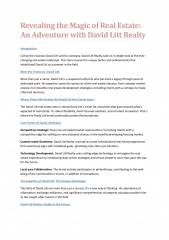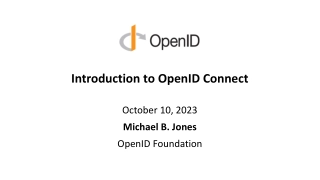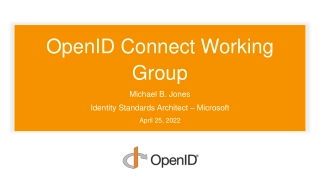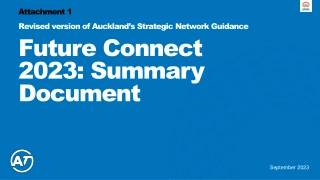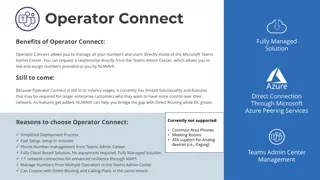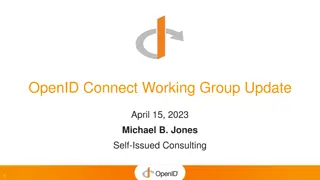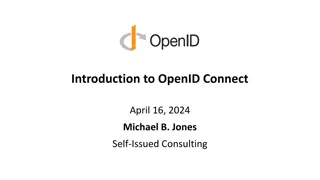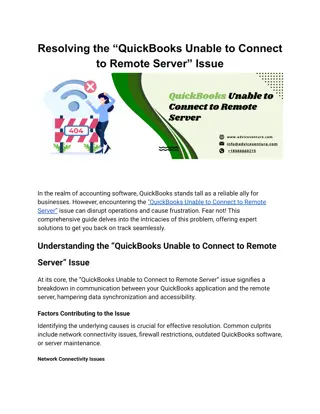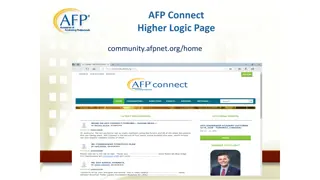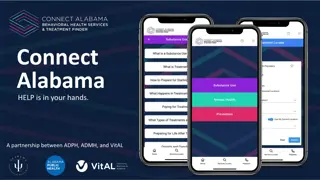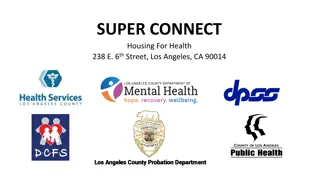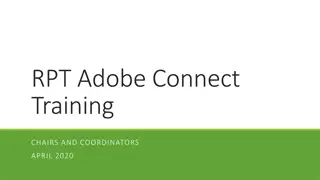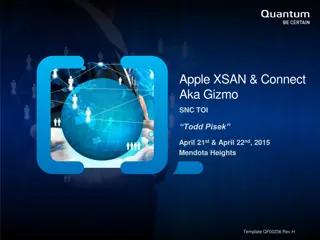
First-Line Nivolumab Plus Chemotherapy in Advanced Gastric Cancer Study Highlights
A summary of the CheckMate 649 study presented at ESMO 2020 discusses the comparison of nivolumab plus chemotherapy versus chemotherapy alone as first-line treatment for advanced gastric cancer (GC), gastro-oesophageal junction cancer (GEJC), and oesophageal adenocarcinoma (EAC). The study's background, design, and primary endpoints are outlined, emphasizing the high unmet medical need for improved overall survival rates beyond one year. The results presented so far highlight the potential impact of immunotherapy in improving outcomes for patients with these advanced gastrointestinal cancers.
Download Presentation

Please find below an Image/Link to download the presentation.
The content on the website is provided AS IS for your information and personal use only. It may not be sold, licensed, or shared on other websites without obtaining consent from the author. If you encounter any issues during the download, it is possible that the publisher has removed the file from their server.
You are allowed to download the files provided on this website for personal or commercial use, subject to the condition that they are used lawfully. All files are the property of their respective owners.
The content on the website is provided AS IS for your information and personal use only. It may not be sold, licensed, or shared on other websites without obtaining consent from the author.
E N D
Presentation Transcript
MEETING SUMMARY ESMO 2020, VIRTUAL MEETING Prof. David Tougeron Service d'H pato-gastro-ent rologie & Service d'Oncologie M dicale, CHU de Poitiers, Poitiers, France HIGHLIGHTS FROM GI CONNECT SEPTEMBER 2020 2
DISCLAIMER Please note: Views expressed within this presentation are the personal opinions of the author. They do not necessarily represent the views of the author s academic institution or the rest of GI CONNECT group. This content is supported by an independent educational grant from Bayer. Disclosures: Prof. David Tougeron has received honoraria from the following: Amgen, Astra Zeneca, Bayer, BMS, Ipsen, Merck Serono, MSD, Novartis, Pierre Fabre, Roche, Sanofi, Servier 3
NIVOLUMAB PLUS CHEMOTHERAPY VERSUS CHEMOTHERAPY AS FIRST-LINE TREATMENT FOR ADVANCED GC/GEJC/EAC: FIRST RESULTS OF THE CHECKMATE 649 STUDY Moehler M, et al. ESMO 2020. Abstract #LBA6_PR. Oral presentation EAC, oesophageal adenocarcinoma; GC, gastric cancer; GEJC, gastro-oesophageal junction cancer 4
BACKGROUND AND DESIGN OF THE STUDY First-line chemo for advanced or metastatic, HER2 , GC or GEJC results in poor OS (median <1 year) There is a high unmet medical need to prolong OS beyond 1 year CheckMate 649 study (NCT02872116): randomised, open-label, Phase 3 study comparing OS in patients with GC or GEJC treated with nivolumab + ipilimumab or nivolumab + chemo compared with chemo alone Eligibility criteria Previously untreated, unresectable, advanced or metastatic GC/GEJC/EAC No known HER2+status ECOG PS 0 or 1 R Dual primary endpoints OS and PFS (PD-L1 CPS 5) Secondary endpoints OS (PD-L1 CPS 1 or all randomised patients) OS (PD-L1 CPS 10) PFS (PD-L1 CPS 10 or 1, or all randomised patients) ORR NIVO 1 mg/kg + IPI 3 mg/kg Q3W x 4 then NIVO 240 mg Q2W 1:1:1 N=789 NIVO 360 mg + XELOX Q3W or NIVO 240 mg + FOLFOX Q2W Stratification factors Tumour cell PD-L1 expression ( 1% vs <1%) Region (Asia vs USA/Canada vs RoW) ECOG PS (0 vs 1) Chemo (XELOX vs FOLFOX) XELOX Q3W or FOLFOX Q2W N=792 N=1,581, including 955 patients (60%) with PD-L1 CPS 5) The abstract reports first results of NIVO + chemo vs chemo chemo, chemotherapy; CPS, combined positive score; EAC, oesophageal adenocarcinoma; ECOG, Eastern Cooperative Oncology Group; FOLFOX, folinic acid + fluorouracil + oxaliplatin; GC, gastric cancer; GEJC, gastro-oesophageal junction cancer; HER2, human epidermal growth factor receptor 2; IPI, ipilimumab; NIVO, nivolumab; ORR, objective response rate; OS, overall survival; PD-L1, programmed death-ligand 1; PFS, progression-free survival; PS, performance status; Q2W, every 2 weeks; Q3W, every 3 weeks; R, randomisation; RoW, rest of the world; XELOX, capecitabine + oxaliplatin 5
RESULTS: OS AND PFS Data cut-off date: 27 May 2020 minimum follow-up duration 12.1 months PD-L1 CPS 5 PD-L1 CPS 1 All randomised patients NIVO + chemo Chemo NIVO + chemo Chemo NIVO + chemo Chemo Median OS, months (95% CI) 14.4 11.1 14.0 11.3 13.8 11.6 (13.1-16.2) (10.0-12.1) (12.6-15.0) (10.6-12.3) (12.6-14.6) (10.9-12.5) HR (98.4% CI)a p value 0.71 (0.59-0.86) <0.0001 0.77 (0.64-0.92) 0.0001 0.80 (0.68-0.94) 0.0002 12-month OS rate, % 57 46 56 47 55 48 Median PFS, months (95% CI) 7.7 6.0 7.5 6.9 7.7 6.9 (7.0-9.2) (5.6-6.9) (7.0-8.4) (6.1-7.0) (7.1-8.5) (6.6-7.1) HR (98% CI)b p value 0.68 (0.56-0.81) <0.0001 0.74 (0.65-0.85) NR 0.77 (0.68-0.87) NR 12-month PFS rate, % 36 22 34 22 33 23 a In the PD-L1 CPS 1 group and the all randomised patients group, the CI was 99.3%; bIn the PD-L1 CPS 1 group and the all randomised patients group, the CI was 95% chemo, chemotherapy; CI, confidence interval; CPS, combined positive score; HR, hazard ratio; NIVO, nivolumab; NR, not reported; OS, overall survival; PD-L1, programmed death-ligand 1; PFS, progression-free survival 6
CONCLUSIONS KEY FINDINGS The safety profile is favourable: no new safety signals were identified with NIVO + chemo NIVO + chemo, compared with chemo alone, resulted in superior OS (3.3 months benefit in patients with CPS 5) and PFS in previously untreated advanced GC/GEJC/EAC PERSPECTIVES NIVO + chemo represents a new potential standard of care in the first-line treatment of advanced GC/GEJC/EAC in patients with CPS 5 Further analyses, especially on quality of life and biomarkers of response (microsatellite instability, Epstein-Barr virus status, etc.), are requested and expected chemo, chemotherapy; CPS, combined positive score; EAC, oesophageal adenocarcinoma; GC, gastric cancer; GEJC, gastro-oesophageal junction cancer; NIVO, nivolumab; OS, overall survival; PFS, progression-free survival 7
NIVOLUMAB PLUS CHEMOTHERAPY VERSUS CHEMOTHERAPY ALONE IN PATIENTS WITH PREVIOUSLY UNTREATED ADVANCED OR RECURRENT GC OR GEJC: ATTRACTION-4 (ONO-4538-37) STUDY Boku N, et al. ESMO 2020. Abstract #LBA7_PR. Oral presentation GC, gastric cancer; GEJC, gastro-oesophageal junction cancer 8
BACKGROUND AND DESIGN OF THE STUDY ATTRACTION-4 study (NCT02746796): a randomised, multicentre, Phase 2 3, two-part study of nivolumab + chemo as first-line treatment in patients with HER2 , advanced GC or GEJC. The Phase 2 part showed promising results for nivolumab + chemo Phase 3 part of ATTRACTION-4: a randomised, double-blind, controlled study conducted at 130 centres in Asia (Japan, Korea, and Taiwan) Key eligibility criteria Treatment continued until Disease progression per RECIST v1.1 Unacceptable toxicity Withdrawal of consent Co-primary endpoints PFS (central assessment by IRRC) and OS Other key endpoints PFS (investigator s assessment), ORR, DoR, DCR, TTR, BOR, and safety Unresectable, advanced or recurrent, HER2 GC/GEJC Chemo na ve ECOG PS 0 or 1 Neoadjuvant or adjuvant chemo allowed if completed 180 days before recurrence NIVO 360 mg IV Q3W + SOX or CapeOX R 1:1 Placebo + SOX or CapeOX Stratification factors Country ECOG PS Tumour cell PD-L1 expression Disease status The abstract reports primary results of NIVO + chemo vs placebo + chemo, with co-primary endpoints PFS and OS BOR, best overall response; CapeOX, capecitabine + oxaliplatin; chemo, chemotherapy; DCR, disease control rate; DoR, duration of response; ECOG, Eastern Cooperative Oncology Group; GC, gastric cancer; GEJC, gastro-oesophageal junction cancer; HER2, human epidermal growth factor receptor 2; IRRC, independent regulatory review committee; IV, intravenously; NIVO, nivolumab; ORR, overall response rate; OS, overall survival; PD-L1, programmed death-ligand 1; PFS, progression-free survival; PS, performance status; Q3W, every 3 weeks; R, randomisation; RECIST, Response Evaluation Criteria in Solid Tumours; SOX, S-1 + oxaliplatin; TTR, time to response 9
RESULTS: OS AND PFS Data cut-off date for interim analysis of PFS: 31 October 2018 median follow-up duration 11.6 months Data cut-off date for final analysis of OS: 31 January 2020 median follow-up duration 26.6 months Total population: 724 patients randomised between March 2017 and May 2018 NIVO + chemo Placebo + chemo Median OS, months (95% CI) 17.45 17.15 (15.67-20.83) (15.18-19.65) HR (95% CI) p value 0.90 (0.75-1.08) 0.257 Median PFS, months (95% CI) 10.45 8.34 (8.44-14.75) (6.97-9.40) HR (98.51% CI) p value 0.68 (0.51-0.90) 0.0007 12-month PFS rate, % 45.4 30.6 chemo, chemotherapy; CI, confidence interval; HR, hazard ratio; NIVO, nivolumab; OS, overall survival; PFS, progression-free survival 10
CONCLUSIONS KEY FINDINGS The safety profile is manageable: no new safety signals were identified with NIVO + chemo NIVO + chemo resulted in statistically significant improvement in PFS but not OS (data are not mature; longer follow-up is needed) PERSPECTIVES NIVO + chemo could be considered a new potential first-line treatment option for Asian patients with advanced GC or GEJC if OS improvement is confirmed Further analyses in different subgroups and of usual biomarkers could help to increase understanding of the population that may benefit from NIVO + chemo and why PD-L1 status was not predictive of PFS in this study chemo, chemotherapy; GC, gastric cancer; GEJC, gastro-oesophageal junction cancer; NIVO, nivolumab; OS, overall survival; PD-L1, programmed death-ligand 1; PFS, progression-free survival 11
PEMBROLIZUMAB PLUS CHEMOTHERAPY VERSUS CHEMOTHERAPY AS FIRST-LINE THERAPY IN PATIENTS WITH ADVANCED OESOPHAGEAL CANCER: THE PHASE 3 KEYNOTE-590 STUDY Kato K, et al. ESMO 2020. Abstract #LBA8_PR. Oral presentation 12
BACKGROUND AND DESIGN OF THE STUDY Pembrolizumab (immune checkpoint inhibitor) as monotherapy showed anti-tumour activity with an acceptable safety profile in advanced or metastatic oesophageal cancer KEYNOTE-590 study (NCT03189719): a randomised, double-blind, placebo-controlled Phase 3 trial of first- line pembrolizumab + chemo vs placebo + chemo in advanced EAC or ESCC Key eligibility criteria Locally advanced, unresectable or metastatic EAC or ESCC or advanced or metastatic oesophagogastric junction Siewert type 1 adenocarcinoma Treatment na ve ECOG PS 0 or 1 Measurable disease (RECIST v1.1) Pembrolizumab 200 mg IV Q3W for 35 cycles + chemoa Co-primary endpoints PFS (RECIST v1.1, investigator s assessment) and OS Secondary endpoint ORR (RECIST v1.1, investigator) Tumour response assessed at Week 9 then Q9W (RECIST v1.1, investigator) R 1:1 Placebo + chemoa Stratification factors Asia vs non-Asia region ECOG PS 0 vs 1 ESCC vs EAC The abstract reports primary results of pembrolizumab + chemo vs placebo + chemo a5-fluorouracil 800 mg/m2IV on days 1-5 Q3W for 35 cycles + cisplatin 80 mg/m2IV Q3W for 6 cycles chemo, chemotherapy; EAC, oesophageal adenocarcinoma; ECOG, Eastern Cooperative Oncology Group; ESCC, oesophageal squamous cell carcinoma; IV, intravenously; ORR, overall response rate; OS, overall survival; PFS, progression-free survival; PS, performance status; Q3W, every 3 weeks; Q9W, every 9 weeks; R, randomisation; RECIST, Response Evaluation Criteria in Solid Tumours 13
RESULTS: OS AND PFS Data cut-off date: 2 July 2020 median follow-up duration 10.8 months Total population: 749 patients randomly assigned 370 patients treated per arm ESCC ESCC PD-L1 CPS 10 PD-L1 CPS 10 All patients Pembro + chemo Chemo Pembro + chemo Chemo Pembro + chemo Chemo Pembro + chemo Chemo Median OS, months (95% CI) 12.6 9.8 13.9 8.8 13.5 9.4 12.4 9.8 (10.2-14.3) (8.6-11.1) (11.1-17.7) (7.8-10.5) (11.1-15.6) (8.0-10.7) (10.5-14.0) (8.8-10.8) HR (95% CI) p value 0.72 (0.60-0.88) 0.0006 0.57 (0.43-0.75) <0.0001 0.62 (0.49-0.78) <0.0001 0.73 (0.62-0.86) <0.0001 12-month OS rate, % 51 38 55 34 54 31 51 39 24-month OS rate, % Median PFSa, months (95% CI) 29 17 31 15 37 15 28 16 6.3 5.8 NR NR 7.5 5.5 6.3 5.8 (6.2-6.9) (5.0-6.1) (NR-NR) (NR-NR) (6.2-8.2) (4.3-6.0) (6.2-6.9) (5.0-6.0) HR (95% CI) p value 0.65 (0.54-0.78) <0.0001 NR (NR-NR) NR 0.51 (0.41-0.65) <0.0001 0.65 (0.55-0.76) <0.0001 12-month PFS rate, % 24 12 NR NR 30 9 25 12 18-month PFS rate, % 17 6 NR NR 21 5 16 6 a Per RECIST v1.1, investigator chemo, chemotherapy; CI, confidence interval; CPS, combined positive score; EAC, oesophageal adenocarcinoma; ESCC, oesophageal squamous cell carcinoma; HR, hazard ratio; NR, not reported; OS, overall survival; PD-L1, programmed death-ligand 1; Pembro, pembrolizumab; PFS, progression-free survival; RECIST, Response Evaluation Criteria in Solid Tumours 14
CONCLUSIONS KEY FINDINGS The safety profile is comparable in the two groups and no new safety signals were identified with pembro + chemo Pembro + chemo resulted in statistically significant improvement in PFS, OS, and ORR (not shown) PERSPECTIVES Pembro + chemo could be considered a new potential first-line treatment option for patients with locally advanced and metastatic oesophageal cancer, especially ESCC (70% of the population) or tumours with PD-L1 CPS 10 (50% of the population) chemo, chemotherapy; CPS; combined positive score; ESCC, oesophageal squamous cell carcinoma; ORR, overall response rate; OS, overall survival; PD-L1, programmed death-ligand 1; pembro, pembrolizumab; PFS, progression-free survival 15
LONG-TERM SURVIVAL WITH REGORAFENIB: REALITY (REAL LIFE IN ITALY) TRIAL A GISCAD STUDY Lai E, et al. ESMO 2020. Abstract #447P. Poster presentation GISCAD, Gruppo Italiano per lo Studio dei Carcinomi dell'Apparato Digerente 16
BACKGROUND AND DESIGN OF THE STUDY Regorafenib: a multikinase inhibitor approved by the US FDA in 2012 to treat mCRC previously treated with fluoropyrimidine-, oxaliplatin-, or irinotecan-based chemotherapy, an anti-VEGF therapy, and, if RAS wild-type, an anti-EGFR therapy However, no validated factors predicting longer survival are available REALITY trial: retrospective, multicentre trial in Italian patients with refractory mCRC treated with regorafenib and having OS 6 months Population Assessment Primary endpoint OS Secondary endpoint PFS mCRC patients treated with regorafenib between January 2014 and December 2015 with OS 6 months (N=100) Clinical parameters and outcome in the study population to define a panel identifying long-term survivors EGFR, epidermal growth factor receptor; FDA, Food and Drug Administration; mCRC, metastatic colorectal cancer; OS, overall survival; PFS, progression-free survival; VEGF, vascular endothelial growth factor 17
RESULTS: SOME PRIMARY AND SECONDARY ENDPOINTS Median OS 11.5 (95% CI 9.60-12.96) months; median PFS 4.2 (95% CI 3.43-43.03) months OS PFS Selected parameters* Duration, months p value Duration, months p value mCRC differentiation Grade 1 Grade 2 Grade 3 LDH level High (>217 U/L) Low ( 217 U/L) In the first 4 cycles Presence of AEs Absence of AEs Dose or schedule changes during the first 4 cycles Yes No 7.4 12.4 9.1 2.2 4.5 3.3 0.0026 <0.0001 8.7 12.1 0.0470 10.2 22.5 3.9 6.53 0.0018 0.0047 10.0 17.7 3.4 11.3 0.0012 0.0020 *The following parameters tested in the study are not reported here, but were shown in the poster: for both OS and PFS: single site PD, non-liver single site PD, no liver PD; for PFS only: no lung PD. AE, adverse event; CI, confidence interval; PD, disease progression; LDH, lactate dehydrogenase; mCRC, metastatic colorectal cancer; OS, overall survival; PFS, progression- free survival 18
CONCLUSIONS KEY FINDINGS The authors defined several parameters that could be associated with better outcome in long-term survivors of mCRC treated with regorafenib: Grade 2 mCRC Low LDH Single-site disease progression Absence of AEs Absence of treatment changes Absence of liver- or lung-disease progression PERSPECTIVES These parameters could help oncologists to select the patients with mCRC who might benefit most from treatment with regorafenib AE, adverse event; LDH, lactate dehydrogenase; mCRC, metastatic colorectal cancer 19
REACH GI CONNECT VIA TWITTER, LINKEDIN, VIMEO & EMAIL OR VISIT THE GROUP S WEBSITE http://www.giconnect.info Follow the GI CONNECT group on LinkedIn Watch us on the Vimeo Channel GI CONNECT Email Follow us on Twitter @giconnectinfo antoine.lacombe @cor2ed.com 20
GI CONNECT Bodenackerstrasse 17 4103 Bottmingen SWITZERLAND Dr. Froukje Sosef MD +31 6 2324 3636 froukje.sosef@cor2ed.com Dr. Antoine Lacombe Pharm D, MBA +41 79 529 42 79 antoine.lacombe@cor2ed.com Heading to the heart of Independent Medical Education Since 2012

